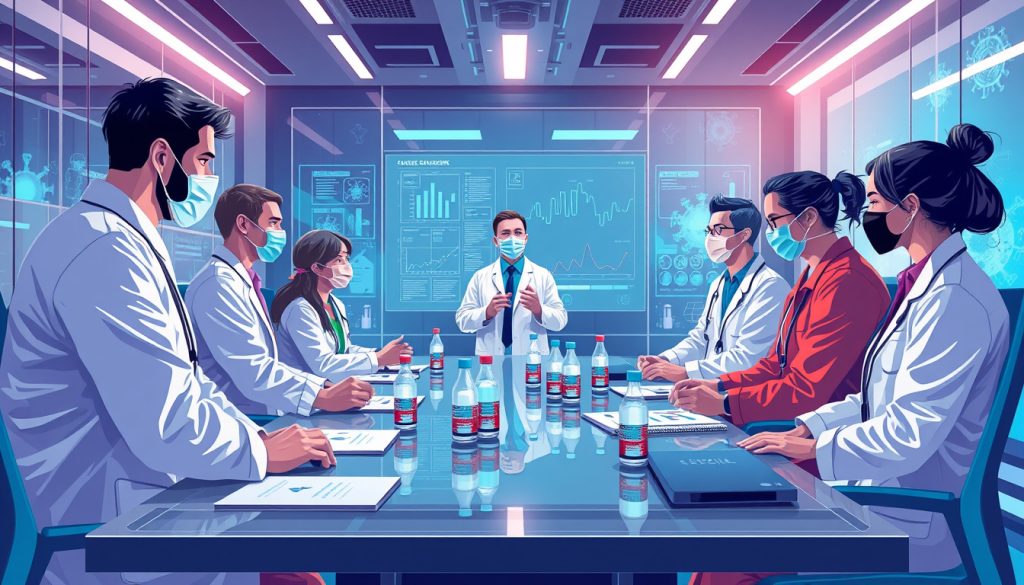Beyond the Numbers: Extrapolating Today’s Trends Forward
The pharmaceutical industry stands at the cusp of significant transformation, driven by emerging trends that are fundamentally reshaping the landscape. As we look towards the future, it is imperative to understand not just the current state of affairs but to forecast where these trends could potentially lead us. By extrapolating today’s trends forward, we can unveil insights into potential opportunities and challenges that lie ahead for stakeholders across the pharmaceutical realm.
Accelerating Digital Transformation
One of the most pronounced shifts in the pharmaceutical industry has been the accelerated adoption of digital technologies. This digital transformation, catalyzed by the COVID-19 pandemic, is poised to redefine facets of pharmaceutical operations from research and development (R&D) to patient engagement strategies. Artificial intelligence (AI) and machine learning (ML) are streamlining drug discovery processes, predicting potential drug candidates with higher accuracy and significantly reduced timelines. Looking ahead, AI and ML are not only expected to become more ingrained in R&D processes but also in personalizing patient care and optimizing manufacturing. Furthermore, the rise of telehealth and digital therapeutics presents a unique set of opportunities for pharmaceutical companies to engage directly with patients, offering personalized healthcare solutions beyond the pill.
Shift towards Personalized Medicine
The move towards personalized medicine is another trend redefining the industry. Advances in genomics and biotechnology have facilitated a deeper understanding of individual genetic profiles, enabling the development of tailored treatments. These targeted therapies promise enhanced efficacy and minimized side effects, heralding a new era in healthcare. As we extrapolate this trend, the demand for personalized treatments is likely to surge, driving pharmaceutical companies to innovate continuously and collaborate closely with biotech firms and diagnostic developers. This collaborative ecosystem could be instrumental in accelerating the delivery of personalized healthcare solutions to the market.
Increased Focus on Sustainable Practices
Sustainability has become a central theme across industries, and the pharmaceutical sector is no exception. There is a growing emphasis on incorporating environmentally sustainable practices throughout the lifecycle of pharmaceutical products, from sourcing raw materials to manufacturing and packaging. This trend is driven by regulatory pressures, consumer demand for eco-friendly products, and a broader societal push towards sustainability. Looking forward, we can anticipate more stringent regulations and an increased commitment from pharmaceutical companies to reduce their environmental footprint. Innovations in green chemistry, recycling of medical components, and sustainable supply chain management will likely become more prevalent as the industry strives to align with global sustainability goals.
The Evolution of Regulatory Landscapes
The regulatory environment for pharmaceuticals is evolving in response to the rapid changes within the industry. Regulatory bodies worldwide are adapting their policies to accommodate the fast pace of innovation, particularly in areas like gene therapy, personalized medicine, and digital health solutions. This evolution is aimed at ensuring patient safety while facilitating the development and approval of groundbreaking treatments. As this trend progresses, pharmaceutical companies will need to navigate an increasingly complex regulatory landscape, necessitating robust regulatory strategies and a proactive approach to compliance.
In conclusion, by extrapolating today’s trends into the future, it becomes clear that the pharmaceutical industry is on the brink of a revolution. Digital transformation, personalized medicine, sustainability, and evolving regulatory frameworks are set to redefine what is possible in healthcare. For pharmaceutical companies, embracing these trends will be critical to staying competitive and delivering innovations that meet the needs of patients and society alike. Ultimately, the industry’s ability to adapt and evolve will determine its success in the coming years, underscuring the importance of looking beyond the numbers to fully grasp the implications of these emerging trends.















